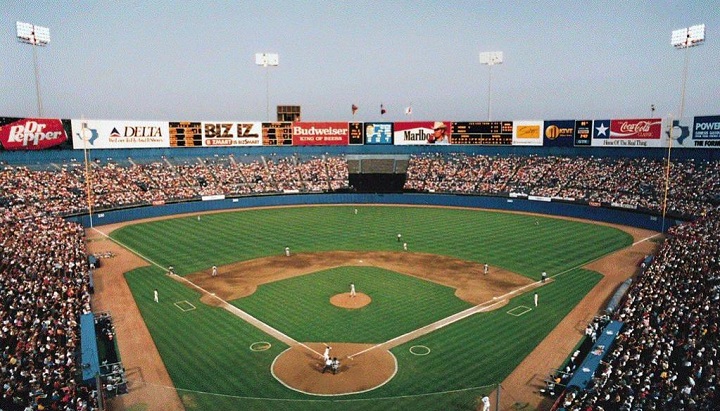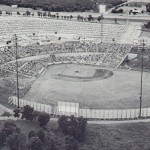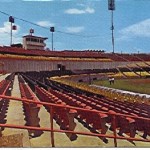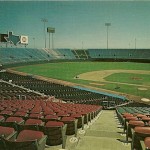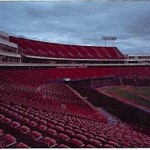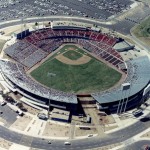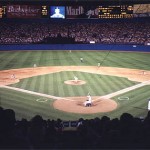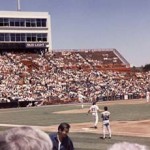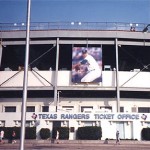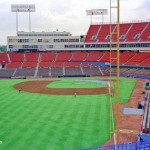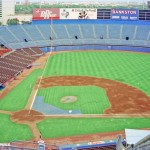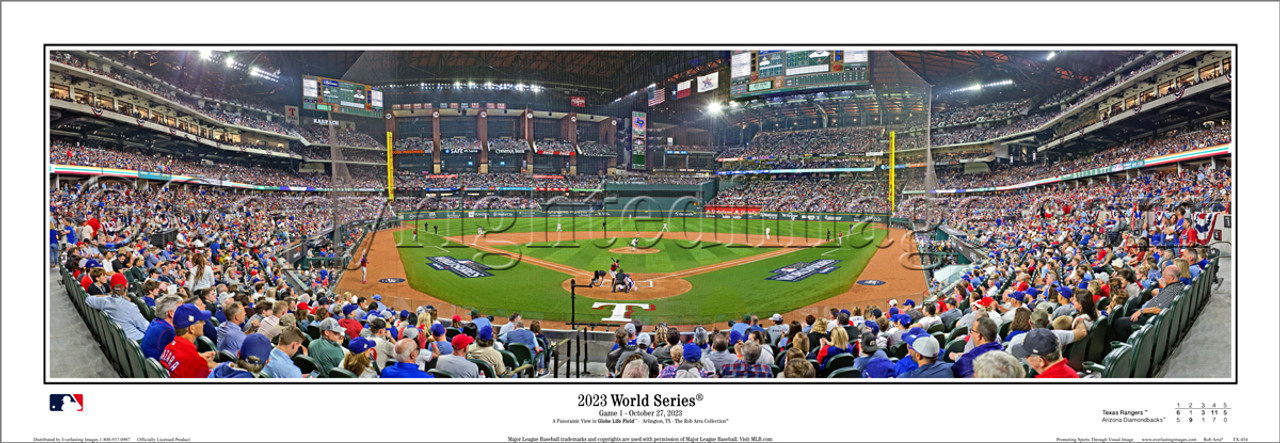Throughout its 28 years of existence Arlington Stadium was known by players and fans as one of the hottest places to play or watch a baseball game. Plans for a new stadium to serve the Dallas-Fort Worth metropolitan area began in 1959. That fall voters approved a bond to build a new stadium to be constructed on a 137 acre tract of land near the Six Flags amusement park. Originally known as Turnpike Stadium the $1.9 million stadium opened on April 23, 1965 as the home of the Double-A Texas Spurs. It originally seated over 10,000 fans with the field 40 feet below the parking lot, allowing fans to walk down to their seats. One tier of stands stretched from the first base dugout to the third base dugout. A grassy knoll was on both sides of the stands. The first of several expansions at the ballpark occurred in 1970 when an additional 10,000 seats were added along the first and third base sides, increasing the capacity to 20,000.
| MEMORABLE MOMENTS AT ARLINGTON STADIUM |
|
In the mid 1960s Mayor of Arlington, Tom Vandergriff, began trying to lure a professional team to Arlington. Vandergriff first tried to get the Kansas City A’s to move to Arlington, but then his efforts turned to the Washington Senators who were struggling both financially and on the field. Senators owner Bob Short moved the club from Washington’s RFK Stadium to Arlington after the 1971 season. Renamed the Texas Rangers, the club moved to Turnpike Stadium, renamed Arlington Stadium, playing their first game here on April 21, 1972. Arlington Stadium was expanded to seat 35,649 fans as the seating bowl was enclosed with the extension of the grandstands into the outfield. A large scoreboard, part that was in the shape of Texas, was behind the stands in left field. The last addition to Arlington Stadium occurred in 1978 when the upper deck was added, bringing the capacity to 41,284. The upper deck was very small and was located mainly behind home plate.
Arlington Stadium remained the same until it closed. With the summer heat and humidity of Texas, Arlington Stadium was the hottest stadium in baseball as almost all the Rangers home games, even Sunday games, were played at night. In the 1980s the Rangers began looking to build a new stadium. A site near Arlington Stadium was chosen and the Rangers new ballpark, the Globe Life Park was built. The Texas Rangers played their last game at Arlington Stadium on October 3, 1993 against the Kansas City Royals. The following year Arlington Stadium was demolished.

